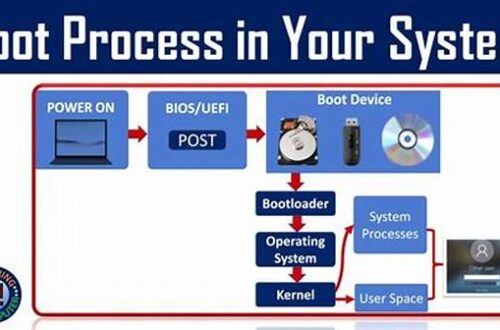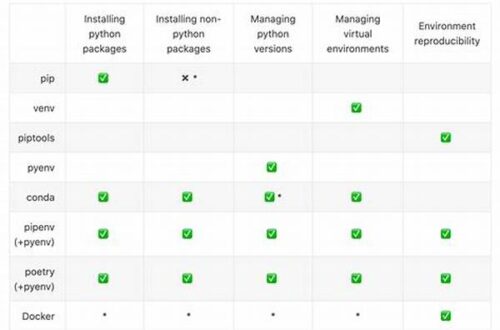In the fast-paced world of technology, efficient software applications are paramount. End-users demand speedy and reliable apps that launch instantly and perform optimally. This brings about the critical challenge for developers: reducing application start-up time. The importance of this issue goes beyond just the end-user experience; developers also benefit from quicker iteration cycles, which leads to more responsive and dynamic updates. Addressing the start-up lag can significantly enhance user satisfaction and elevate an application’s market position. Let’s delve into how we can tackle this task effectively.
Read Now : Beginner-friendly Laptops For Coding
Key Factors in Reducing Application Start-up Time
Reducing application start-up time starts with understanding the components that contribute to delays. A major factor is the size and complexity of the application code. Extensive and unoptimized code can create bottlenecks when launching an application. Developers should perform code audits and refactor large codebases to spotlight areas for improvement. Another factor lies in the application’s resources. Large image files, excessive libraries, and redundant assets can bloat the application, leading to increased start-up time. Optimizing these resources to maintain quality while minimizing size is a valuable strategy. Furthermore, dependency on external services can introduce delays. Reducing the number of external API calls during start-up or improving the speed of these requests plays a crucial role in reducing application start-up time. Lastly, hardware performance characteristics also dictate start-up times. While developers cannot alter user hardware, they can design resilient applications that perform optimally across various device specifications.
Techniques for Reducing Application Start-up Time
1. Code Optimization: Clean and efficient code is fundamental in reducing application start-up time. By eliminating unnecessary lines and refactoring complex functions, developers can enhance performance.
2. Lazy Loading: Implementing lazy loading helps in reducing application start-up time by deferring the loading of non-essential resources until they are required.
3. Asset Minification: Reducing application start-up time can be achieved by minifying assets. This process minimizes the size of CSS, JavaScript, and HTML files, leading to quicker load times.
4. Streamlining Dependencies: Carefully managing and possibly eliminating external dependencies helps in reducing application start-up time. Only crucial libraries should be utilized.
5. Caching Strategies: Implementing effective caching techniques can drastically reduce application start-up time. Caching frequently used data ensures faster access and smooth operation.
Advanced Approaches to Reducing Application Start-up Time
Measuring and understanding performance metrics is vital for reducing application start-up time. Utilizing tools such as performance profilers or analytics provides insight into start-up bottlenecks. These tools offer a granular view of start-up processes, helping teams pinpoint areas for improvement. It’s crucial to continually monitor these metrics over different stages of development to ensure consistent performance improvements. Furthermore, predictive loading techniques can assist in reducing application start-up time. By anticipating user actions and pre-loading necessary resources during idle times, applications can improve load speeds significantly. This method requires a keen understanding of user patterns and application workflows.
In addition to software-based optimization, it’s essential to maintain a dialogue with device manufacturers. Collaborations can aid in reducing application start-up time by optimizing an application specifically for certain devices. Such partnerships may also result in exclusive performance enhancements, giving applications a competitive edge. Lastly, developer collaboration plays a significant role. A cohesive team employing consistent coding practices will deliver efficient solutions more quickly, directly impacting the application’s launch time.
Strategies for Continuous Improvement
1. Regular Code Reviews: To continually refine your application, regular code reviews are necessary. They help in identifying inefficiencies and redundancies, contributing to reducing application start-up time.
2. Community Engagement: Engaging with a developer community offers fresh perspectives and solutions, aiding in reducing application start-up time. Collaborative problem-solving can yield innovative strategies.
3. Continuous Training: Developing skills in newer technologies and techniques is crucial. By staying updated, developers can employ the most efficient practices, leading to reducing application start-up time.
4. Benchmarking Against Competitors: Consistently evaluating your application’s performance against competitors can reveal areas needing improvement, aiding in reducing application start-up time.
5. Automated Testing: Automated testing ensures that enhancements aiming at reducing application start-up time do not introduce new issues, maintaining application stability.
Read Now : Dual Monitor Setup Instructions
6. Feedback Loops: Establishing strong feedback loops with users provides insights into real-world performance. This user data is invaluable in the journey of reducing application start-up time.
7. Cross-Platform Testing: Ensuring that applications perform consistently across different platforms fortifies the efforts of reducing application start-up time and ensures a broader reach.
8. Resource Allocation: Efficiently managing server and hardware resources contributes to reducing application start-up time, optimizing data retrieval and processing speed.
9. Security Audits: While performance is key, security cannot be overlooked. Regular audits ensure that security measures don’t negatively impact reducing application start-up time.
10. Iterative Development: Using iterative development practices allows for incremental improvements, consistently contributing towards reducing application start-up time and improving overall application performance.
Enhancing User Experience through Speed
Reducing application start-up time is not just a technical necessity but also a pivotal component of enhancing user experience. Fast-loading applications create immediate positive impressions and reduce the friction users might feel with slower alternatives. This aspect can critically influence customer satisfaction, retention, and recommendation rates. Developers can leverage modern frameworks that inherently support quicker initialization processes, thus contributing to reducing application start-up time. Rapid start-ups ensure seamless user journeys from the first interaction, paving the way for greater engagement and loyalty.
Reducing application start-up time goes hand in hand with optimizing overall application functionality. Users expect reliability, smooth navigation, and immediate responses from the software they engage with. By focusing on reducing application start-up time, developers set the stage for delivering these additional attributes successfully. Consistent attention to performance factors ensures that applications remain competitive, appealing, and, most importantly, responsive to the needs of the modern digital audience. In achieving this balance, an application can truly thrive in a crowded digital marketplace.
Overcoming Technical Challenges
Reducing application start-up time does not come without its challenges. Developers often face technical constraints such as legacy systems, complex integrations, and limited resources. Navigating these obstacles requires strategic planning, resource allocation, and sometimes, innovative workarounds that still adhere to efficient coding practices. Collaboration with cross-functional teams ensures that all aspects, from front-end design to back-end operations, align seamlessly to support efforts in reducing application start-up time.
Adapting to technological advancements is another hurdle. As operating systems, devices, and user expectations continuously evolve, maintaining low start-up times is an ongoing commitment. Developers must remain agile, embracing new tools and methodologies that assist in reducing application start-up time. Strategic investments in technology stacks, cloud solutions, and agile project management practices can streamline the development process, equipping teams to meet and exceed performance benchmarks consistently.
Conclusion: The Future of Application Efficiency
Reducing application start-up time continues to be a vital goal for developers aiming to produce high-quality applications that resonate with users. By focusing on optimizing code, managing resources efficiently, and employing both traditional and innovative approaches, developers can achieve significant reductions in start-up times. The importance of these optimizations extends beyond mere performance metrics; they play a crucial role in defining the user experience and determining the application’s success in the market.
In the future, reducing application start-up time will likely become more intrinsic to the overall development ethos. As technology advances and user expectations grow ever higher, developers will need to integrate performance optimization into their foundational design principles. This shift has the potential to redefine application development, creating software that is not only quicker to start but also more efficient, sustainable, and harmonious with user needs and technological capabilities. Reducing application start-up time represents a commitment to quality, innovation, and user-centric design.





